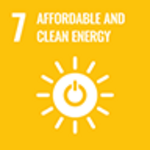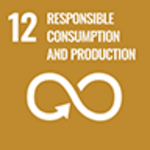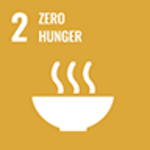
Professor Atsushi Fukuoka
Affiliation: Institute for Catalysis, Graduate School of Chemical Sciences and Engineering (Department School of Science Faculty of Science)
Expertise: Chemistry, Catalytic Chemistry
Research Keywords: Catalyst, Nanostructure Chemistry, Freshness Preservation, Cellulose, Chitin
Alma mater: Odate Houmei High School (Akita Prefecture)
Final academic background: Graduate School of Engineering, University of Tokyo
HP address:http://www.cat.hokudai.ac.jp/fukuoka/
A solid catalyst that reduces food loss and creates a sustainable society
(Go to Yumenavi lecture video)*This article was originally published in the 4th issue of "Frontiers of Knowledge" and has been re-edited for the web. Updated on December 21, 2022
what are you researching?
I am doing research on catalysts. A catalyst is a substance that accelerates a chemical reaction. Even if the reaction does not proceed as it is, it is possible to proceed in a short time by using a catalyst. My research is focused on solid catalysts, and I use two approaches to advance my research. One is to search for a reaction that can use the material of your interest, and the other is to search for a catalyst for the target reaction. The former research has led to the preservation of freshness of vegetables and fruits in refrigerators and storehouses. On the other hand, the latter aims to decompose biomass to synthesize fuels and high-performance chemicals. For the design of solid catalysts, we are studying the basics of catalytic chemistry from the viewpoint of nanostructure chemistry and conducting research to apply it to usable reactions.
Preserving the freshness of vegetables and fruits with a catalyst

Figure 1 Ethylene oxidation by platinum catalyst
We are interested in a material called porous silica, which has pores, and are conducting research to find catalytic reactions that can use this material. More than ten years ago, I started researching the oxidation reaction of ethylene using a catalyst of platinum ultrafine particles attached to silica. In ethylene oxidation, synthesis of ethylene oxide (raw material for PET bottles) by partial oxidation is desired, but when this catalyst is used, ethylene is oxidized to carbon dioxide (CO2), and the desired product cannot be obtained at all. did. However, after reading a paper that said that vegetables release a small amount of ethylene and promote their own ripening, I realized that if ethylene can be completely oxidized to CO2 at low temperatures, it can be used to preserve the freshness of vegetables and fruits. Therefore, when we tested our catalyst, we found that even a small amount of ethylene was completely oxidized at 0ºC, producing CO2 and water (Fig. 1). This led to joint research with a company on its application as a refrigerator catalyst, and refrigerators equipped with this catalyst (named "platinum catalyst") went on sale in 2015 and are still on the market today. . It has also been used in large vegetable storages, prolonging the storage period of vegetables and reducing the amount of waste. We expect that this catalyst technology can also be applied to the storage and transportation of high-value-added Hokkaido agricultural products.
Biomass conversion by solid catalyst

Figure 2 Cellulose hydrolysis/hydrogenation
We are also researching biomass conversion with solid catalysts. If biomass is used as a raw material for organic compounds, the consumption of petroleum, which is a limited resource, can be suppressed, and it can also be a measure against global warming. The goal is the depolymerization of cellulose and chitin. However, biomass conversion is not easy. Cellulose has a rigid crystal structure, making it difficult to depolymerize, and once the reaction occurs, it is difficult to stop the reaction with the desired glucose. Conventionally, methods using enzymes or sulfuric acid as catalysts have been tried, but there are problems such as difficulty in reuse. On the other hand, solid catalysts are easy to separate and reuse, so I thought they would be advantageous, so I started researching them. It was also found that hydrolysis and hydrogenation by the supported metal catalyst proceeded with the decomposition of cellulose, producing sorbitol via glucose (Fig. 2). This is the world's first solid-catalyzed cellulose decomposition. Recently, we discovered that the reaction proceeds even with activated carbon, which has weak acid sites, and succeeded in synthesizing glucose from cellulose at high speed. In addition, carbons with weak acid sites can hydrolyze chitin to selectively produce chitin oligosaccharides with high added value (Fig. 3).

Figure 3 Chitin depolymerization method using weakly acidic carbon
What do you want next?
We study the correlation between the structure and reaction mechanism of platinum catalysts. We aim to design higher performance catalysts and reduce the use of precious metals such as platinum. In biomass research, we aim to develop artificial catalysts that enable the depolymerization of crystalline cellulose and to synthesize useful organic nitrogen compounds from chitin.
Reference book
Iwasawa, Kobayashi, Tomishige, Sekine, Ueno, Yui "Catalyst Chemistry" Shokabo (2019)






















